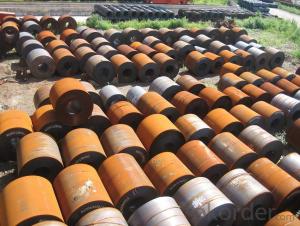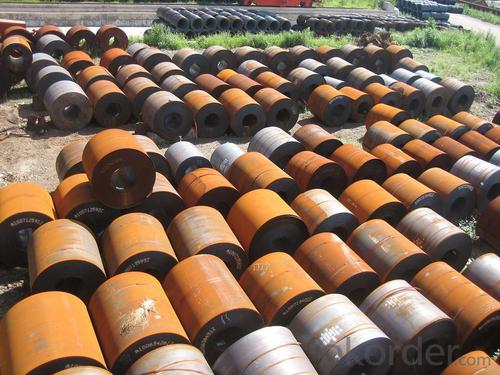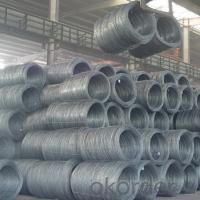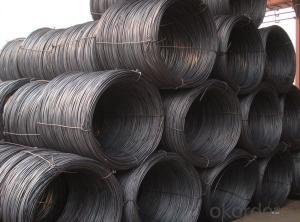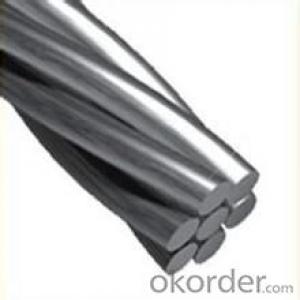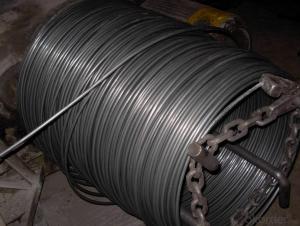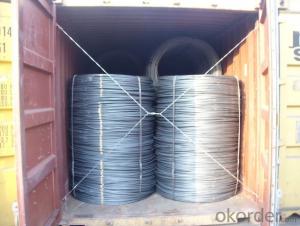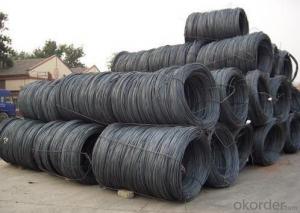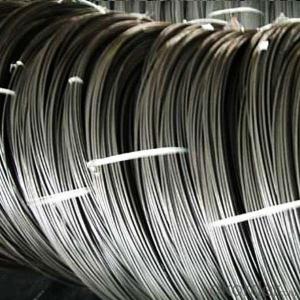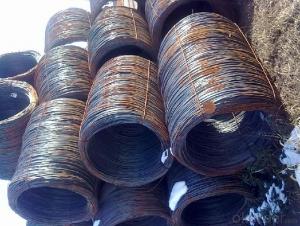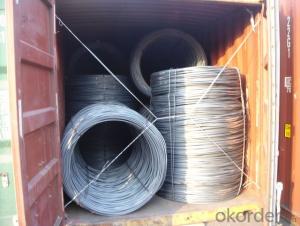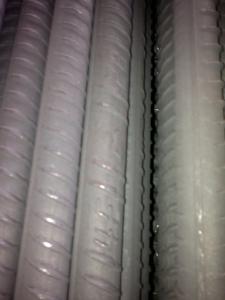Hot- rolled stainless steel coil for construction GB Q195
- Loading Port:
- Tianjin
- Payment Terms:
- TT OR LC
- Min Order Qty:
- 25 m.t.
- Supply Capability:
- 100000 m.t./month
OKorder Service Pledge
OKorder Financial Service
You Might Also Like
Product Description:
1.Description of Hot Dipped Galvanized Steel Coil Z275/Zinc Coated Steel Coil:
Galvanized steel coil is a special type of steel coil used in a number of different applications within fabrication and manufacturing environments. Steel coil of any kind is flat stock that is thin enough to be rolled into a coil or wound into a continuous roll. It is also able to be rolled out flat and cut at any length or shape needed. Having the steel coil galvanized helps the user by allowing it to be applied in outdoor fabrication projects.
2.Specifications of Hot Dipped Galvanized Steel Coil Z275/Zinc Coated Steel Coil:
1)Standard: AISI,ASTM,BS,GB,JIS
2)Grade:SGCC,DC51D,DX51D,DX52D,SPCC,SGCD,Q235,SGHC, G350…
3)Thickness: 0.14mm-2.5mm
4)Width: 100mm -600mm, 600mm-1500mm,762mm,914mm,1000mm,1200mm,1219mm,1250mm.
5)Length: 1000-6000mm or as customer’s requirement
3.Hot Dipped Galvanized Steel Coil Z275/Zinc Coated Steel Coil Images:
4.Hot Dipped Galvanized Steel Coil Z275/Zinc Coated Steel Coil Specification:
Trade information | ||
Technique | cold rolled | |
Standard | ASTM A653-2001,DIN10142-91,DIN1012--92, EN10327,JISG3302-2005,GB/T2518-2004 | |
Surface Treatment | Galvanized(Zinc 60—275g/m2)Oil,chromated as your requirement | |
Coil ID | 508mm/610mm | |
MOQ | 20 metric tons or negotiation | |
Package | Export standard package | |
Delivery Time | According to the order quantity | |
Trade Terms | FOB,CFR or CIF | |
Payment Term | T/T or L/C at sight | |
5.FAQ
We have organized several common questions for our clients,may help you sincerely:
①How about your company?
A world class manufacturer & supplier of castings forging in carbon steel and alloy steel,is one of the large-scale professional investment casting production bases in China,consisting of both casting foundry forging and machining factory. Annually more than 8000 tons Precision casting and forging parts are exported to markets in Europe,America and Japan. OEM casting and forging service available according to customer’s requirement.
②How to guarantee the quality of the products?
We have established the international advanced quality management system,every link from raw material to final product we have strict quality test;We resolutely put an end to unqualified products flowing into the market. At the same time, we will provide necessary follow-up service assurance.
③How long can we receive the product after purchase?
In the purchase of product within three working days, We will arrange the factory delivery as soon as possible. The pecific time of receiving is related to the state and position of customers.Commonly 7 to 10 working days can be served.

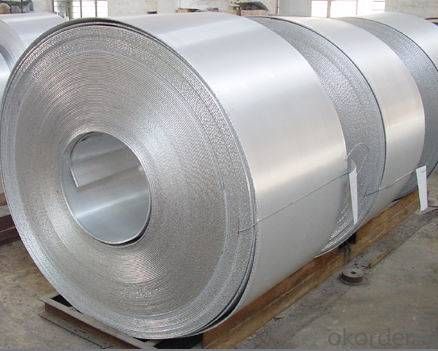
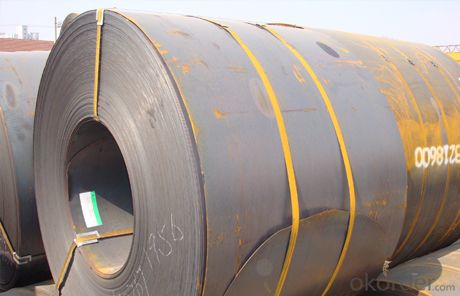
- Q: What are the common industry standards for steel wire rod distributors?
- The common industry standards for steel wire rod distributors include complying with international quality and safety standards such as ASTM (American Society for Testing and Materials), ISO (International Organization for Standardization), and AISI (American Iron and Steel Institute) specifications. These standards define the chemical composition, mechanical properties, dimensions, and other essential characteristics of steel wire rods to ensure consistency and reliability in their usage across various industries.
- Q: How is steel wire rod used in the manufacturing of wire forms for wind turbines?
- Steel wire rod is an essential component in the manufacturing process of wire forms for wind turbines. It serves as the raw material that undergoes various processes to transform it into the final wire forms used in wind turbine applications. Firstly, steel wire rod is selected for its high strength and durability, as it needs to withstand the harsh environmental conditions and high loads experienced by wind turbines. The wire rod is typically made of low carbon steel, which offers the desired combination of strength and flexibility. The manufacturing process begins with the wire rod being fed into a wire drawing machine. This machine pulls the wire rod through a series of dies, gradually reducing its diameter and increasing its length. This process is known as wire drawing and helps to improve the wire's mechanical properties, including its tensile strength and surface finish. Once the wire has been drawn to the desired diameter, it is ready for further processing. It may undergo additional treatments such as heat treatment or surface coating to enhance its properties. Heat treatment can provide improved strength and flexibility, while surface coating can protect against corrosion and abrasion. After the necessary treatments, the wire is then formed into the desired shape for wind turbine components. This can be done through various methods such as bending, twisting, or welding. These forming processes are crucial in creating wire forms that can effectively support and transmit the mechanical loads experienced by wind turbines. The wire forms manufactured from steel wire rod are used in various applications within wind turbines. They can be used as support structures for the blades, providing stability and strength. Additionally, wire forms are used as electrical conductors, transmitting power generated by the wind turbine to the electrical grid. In conclusion, steel wire rod plays a vital role in the manufacturing of wire forms for wind turbines. Its high strength, durability, and versatility make it an ideal material for withstanding the demanding conditions and loads experienced by wind turbines. Through various processes, the wire rod is transformed into wire forms that serve as crucial components in wind turbine construction and operation.
- Q: What are the main factors influencing the choice of steel wire rod order payment method?
- The main factors influencing the choice of steel wire rod order payment method can vary depending on the specific circumstances and preferences of the parties involved. However, some common factors that often come into play include: 1. Transaction volume and frequency: If the buyer and seller have a long-term and high-volume relationship, they may opt for a more convenient and efficient payment method such as open account or letter of credit. This allows for smoother and quicker transactions without the need for repetitive paperwork or bank involvement. 2. Trust and creditworthiness: If there is a lack of trust between the buyer and seller, or if the buyer's creditworthiness is questionable, the seller may prefer more secure payment methods such as advance payment or documentary collection. These methods provide a level of assurance that the payment will be made before the goods are delivered. 3. Cost and convenience: The cost and convenience of different payment methods can also influence the choice. For instance, if the buyer wants to avoid additional fees or charges associated with certain payment methods, they may opt for methods like cash in advance or electronic funds transfer. On the other hand, if the seller wants to minimize the administrative burden or costs of payment processing, they may prefer open account or electronic payments. 4. Country-specific regulations and customs: Different countries have their own regulations and customs when it comes to international trade and payment methods. For example, certain countries may have restrictions on certain payment methods or require specific documentation for customs clearance. Sellers and buyers need to consider these factors when choosing the payment method. 5. Payment security and risk mitigation: The level of payment security and risk mitigation desired by the buyer and seller can also influence the choice of payment method. Methods such as letter of credit or documentary collection provide a higher level of security and risk mitigation compared to methods like open account or cash in advance. 6. Market norms and industry practices: The prevailing market norms and industry practices may also influence the choice of payment method. For instance, in certain industries or regions, it may be common to use specific payment methods due to historical practices or preferences. In conclusion, the main factors influencing the choice of steel wire rod order payment method include transaction volume and frequency, trust and creditworthiness, cost and convenience, country-specific regulations and customs, payment security and risk mitigation, as well as market norms and industry practices. It is essential for both the buyer and seller to carefully evaluate these factors to select the most suitable payment method for their specific situation.
- Q: How is steel wire rod used in the manufacturing of wire forms for aerospace applications?
- Steel wire rod is an essential component in the manufacturing of wire forms for aerospace applications. It is primarily used as the raw material for wire drawing, where it undergoes a series of processes to transform it into wire forms with specific dimensions and characteristics. The first step in the manufacturing process is to select high-quality steel wire rod that meets stringent aerospace industry standards. This ensures that the wire forms possess the necessary strength, durability, and resistance to corrosion required for aerospace applications. Once the appropriate steel wire rod is obtained, it is fed through a series of dies in a wire drawing machine. This process involves pulling the wire rod through progressively smaller dies to reduce its diameter and increase its length. The wire drawing process not only shapes the wire but also refines its microstructure, resulting in improved mechanical properties. After wire drawing, the steel wire is further processed depending on the specific requirements of the wire forms. It can undergo additional treatments such as heat treatment, surface coating, or plating to enhance its performance and meet the stringent standards of the aerospace industry. The wire forms manufactured from steel wire rod find a wide range of applications in the aerospace sector. They are used in the production of aircraft components like springs, fasteners, connectors, wire harnesses, and control cables. These wire forms play a crucial role in ensuring the structural integrity, functionality, and safety of various aerospace systems. The use of steel wire rod in the manufacturing of wire forms for aerospace applications offers numerous advantages. Steel is known for its high strength-to-weight ratio, excellent fatigue resistance, and good electrical conductivity. These properties make steel wire forms ideal for withstanding the demanding conditions experienced in the aerospace industry. In conclusion, steel wire rod is a crucial raw material in the manufacturing of wire forms for aerospace applications. Its transformation through processes like wire drawing and additional treatments results in wire forms with the necessary properties to meet the stringent requirements of the aerospace industry. These wire forms contribute significantly to the structural integrity and functionality of various aerospace systems.
- Q: What are the quality standards for steel wire rod?
- The quality standards for steel wire rod are defined by various organizations and industry specifications. These standards ensure that the steel wire rod meets certain criteria and performance requirements. One of the most widely recognized standards for steel wire rod is the American Society for Testing and Materials (ASTM) A510/A510M specification. This standard defines the chemical composition, mechanical properties, and dimensional tolerances for steel wire rod. It specifies the required levels of carbon, manganese, sulfur, phosphorus, and other elements in the steel, as well as the tensile strength, yield strength, and elongation properties. In addition to ASTM, other organizations such as the International Organization for Standardization (ISO), European Committee for Standardization (EN), and Japanese Industrial Standards (JIS) have their own standards for steel wire rod. These standards may have slight variations in terms of chemical composition, mechanical properties, and testing methods, depending on the region and intended application. The quality standards for steel wire rod also include specific requirements for surface quality, such as the absence of cracks, seams, and other defects. The surface should be smooth and free from scale or excessive rust. To ensure compliance with these standards, steel wire rod manufacturers conduct various tests and inspections during the production process. These tests may include chemical composition analysis, mechanical property testing, surface inspection, and dimensional checks. Additionally, third-party certification bodies may provide independent verification of the product's quality and adherence to the specified standards. Ultimately, the quality standards for steel wire rod aim to ensure that the product meets the requirements for its intended use, whether it is in construction, automotive, manufacturing, or any other industry where steel wire rod is utilized.
- Q: How is steel wire rod used in the manufacturing of wire for garage door springs?
- Steel wire rod is used in the manufacturing of wire for garage door springs by being heated, drawn, and coiled to form the desired wire diameter and tensile strength required for the springs.
- Q: How does the tensile strength of steel wire rod vary with different grades?
- The tensile strength of steel wire rod can vary significantly with different grades. The grade of steel refers to its composition and the specific properties it possesses. Generally, higher grade steel wire rods have higher tensile strength. Different grades of steel wire rod contain varying amounts of carbon, manganese, silicon, and other elements. The composition of the steel influences its strength, hardness, and other mechanical properties. Steel wire rods with higher carbon content, for example, tend to have higher tensile strength. Additionally, the manufacturing process used to produce steel wire rod can also affect its tensile strength. The steel can be subjected to various heat treatment processes such as quenching and tempering, which can further enhance its strength. In summary, the tensile strength of steel wire rod varies with different grades due to differences in composition and manufacturing processes. Higher grade steel wire rods generally have higher tensile strength, allowing them to withstand greater forces and pressures.
- Q: What are the main factors influencing the choice of steel wire rod warranty?
- The choice of steel wire rod warranty is influenced by several key factors. Firstly, the quality of the steel wire rod is crucial. Buyers prefer a high-quality product that is unlikely to have defects or issues, reducing the need for warranty claims. Factors such as strength, durability, and overall performance play a significant role in determining confidence in the product and, consequently, the warranty. Secondly, the reputation of the manufacturer is another important consideration. Buyers are more likely to trust a manufacturer with a proven track record of producing high-quality steel wire rods and providing reliable warranties. Positive reviews, testimonials, and references from other customers can provide valuable insights into the manufacturer's commitment to customer satisfaction and after-sales service. Lastly, the terms and conditions of the warranty itself are essential. Buyers carefully consider factors such as the duration of the warranty, the extent of coverage it offers, and any limitations or exclusions stated in the warranty documentation. A longer warranty period and comprehensive coverage, including protection against manufacturing defects or premature failure, are often preferred. Additionally, factors such as the process for filing warranty claims, the responsiveness of the manufacturer's customer service, and the ease of warranty fulfillment are also taken into account. To summarize, the main factors influencing the choice of steel wire rod warranty are the quality of the product, the reputation of the manufacturer, and the terms and conditions of the warranty. Buyers prioritize a high-quality product, a reputable manufacturer, and a warranty with favorable terms and comprehensive coverage.
- Q: How are steel wire rods used in the production of wire mesh?
- Steel wire rods are an essential component in the production of wire mesh. These rods are first heated and then passed through a series of dies to create the desired wire diameter. The wire rods are often made of low-carbon steel, which provides the necessary strength and durability for wire mesh applications. Once the steel wire rods have been shaped and the desired diameter has been achieved, they are then fed into a wire mesh machine. This machine works by interweaving the individual wires together, forming a grid-like pattern. The wire rods are placed vertically and horizontally, and they are mechanically connected at their intersections. The resulting wire mesh serves a variety of purposes across different industries. It can be used for fencing and security purposes, providing a strong and reliable barrier. Wire mesh is also used in construction as a reinforcement material, adding strength and stability to concrete structures. Additionally, it finds applications in industries such as agriculture, mining, and filtration. The quality of the steel wire rods used in the production of wire mesh is crucial to ensure the durability and reliability of the final product. High-quality rods with the appropriate tensile strength and corrosion resistance properties are selected to meet the specific requirements of each application. In summary, steel wire rods are used in the production of wire mesh by being shaped into the desired wire diameter and then interwoven together to create a grid-like pattern. The resulting wire mesh is used in various industries for applications such as fencing, construction reinforcement, and filtration.
- Q: What are the main factors influencing the choice of steel wire rod end-user?
- There are several main factors that influence the choice of steel wire rod end-user. First and foremost, the quality and composition of the steel wire rod play a crucial role in the decision-making process. End-users look for wire rods that have high tensile strength, good ductility, and excellent corrosion resistance. These properties ensure that the wire rod will perform optimally in their specific application, whether it's for manufacturing automotive parts, construction materials, or electrical wires. Another important factor is the price of the steel wire rod. End-users carefully consider the cost-effectiveness of the wire rod, as it directly impacts their production costs. They compare prices from different suppliers and evaluate the balance between quality and price to find the most suitable option for their needs. Additionally, the availability and reliability of the supplier are significant factors influencing the choice of steel wire rod end-user. End-users prefer suppliers who can consistently provide the required quantity and quality of wire rod within the desired timeframe. A reliable supplier ensures a steady supply chain, minimizing any production delays or disruptions. Furthermore, technical support and customer service offered by the supplier are essential considerations. End-users appreciate suppliers who can offer assistance and guidance in selecting the right wire rod for their specific application. This support can include recommendations on material selection, technical specifications, and after-sales services, which contribute to a long-term and successful partnership. Lastly, environmental sustainability is becoming an increasingly important factor in the choice of steel wire rod end-user. Many end-users prioritize suppliers that demonstrate a commitment to sustainable practices, such as using recycled materials or reducing carbon emissions. This aligns with their own corporate social responsibility goals and helps them meet regulatory requirements. In conclusion, the main factors influencing the choice of steel wire rod end-user include the quality and composition of the wire rod, its price, the availability and reliability of the supplier, the technical support and customer service provided, and the supplier's commitment to environmental sustainability.
Send your message to us
Hot- rolled stainless steel coil for construction GB Q195
- Loading Port:
- Tianjin
- Payment Terms:
- TT OR LC
- Min Order Qty:
- 25 m.t.
- Supply Capability:
- 100000 m.t./month
OKorder Service Pledge
OKorder Financial Service
Similar products
Hot products
Hot Searches
Related keywords
